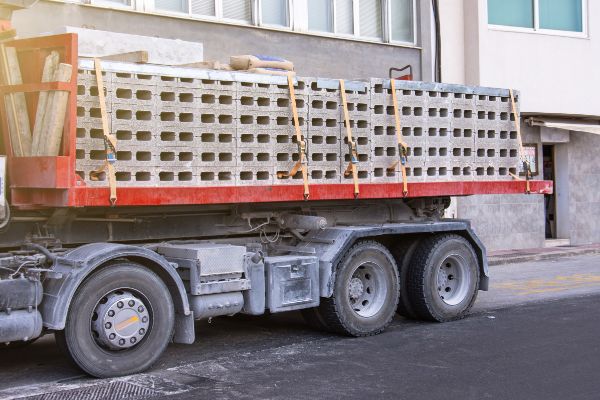
Knowing how to secure the load and balance your cargo’s weight so that not too much weight is over one wheel or a set of axles is essential to safe transport. Not only that, but this could keep you from getting a ticket for an overweight vehicle when you don’t have a full load.
Many drivers are shocked to get a ticket at the “chicken coop” when their truck is half empty. CA Vehicle Code (CVC) 35551, Axle Limits points out the maximum weight that can rest on one wheel or one set of axles depending on “distance in feet between the extremes of any group of two or more consecutive axles.”
What’s more, the CHP at weigh stations round up or down at six inches. That means a set of axles with a distance of four feet to eight feet, five inches, can carry up to 34,000 pounds. However, at eight feet, six inches that set of axles could carry up to 39,000 pounds. Now, when the driver is counting on eight feet four inches as nine feet, the load is suddenly 5,000 pounds overweight in CA; whereas, it might have been legal in Arizona. Drivers with a truck 4,501 pounds overweight in CA are guilty of a misdemeanor and face jail time or probation of up to six months.
Novice drivers can find some valuable information in Chapter 3.2 of the DMV Commercial Driver Handbook. Using the tips and tricks provided by the DMV in this publication can save you ticket troubles, and it could keep you safer.
Balance the Cargo & Secure the Load
Starting on page 3-1 of the DMV driver handbook, the handbook has several tips about balancing the load and the consequences of a cargo load that is not balanced correctly. Too much weight over the back axles could mean not enough over the steering axles so that in adverse weather, your vehicle becomes more difficult to control because the wheels might hydroplane. Too much weight there can make it harder to steer.
A cargo load with heavy items up top has a higher chance of rollover, particularly in sharp curves, or when you must swerve quickly to avoid another vehicle or animal on the highway. Most truckers have a mantra never to swerve to miss an animal, which is understandable even for animal lovers because of the danger it presents.
Your handbook even has several illustrations depicting the wrong way to load cargo versus the right way. Also, once you balance the load, you need to ensure it is tied down so that it will not move while on the road.
Cargo Tie-Downs Are used to Secure the Load
Whether you are transporting cargo on a flatbed or a closed trailer, securing your cargo is essential to keep it from shifting. On a flatbed, when cargo shifts, it might fly off and damage surrounding vehicles or cause accidents and injuries. Plus, flatbed cargo must be covered to protect others on the road from cargo flying off, and to protect the shipment from the weather. Figure 3.2 remarks and illustrates that, “Cargo should have at least one tie-down for every 10 feet of cargo.”
CFR, Title 49 §393 provides guidance on tying down vehicles, logs and lumber, boulders, and much more.
Likewise, you must ensure containerized cargo gets secured to the vehicle. Additionally, check the overall weight and weight as it sits on the flatbed to ensure that too much weight is not sitting on one wheel or axle.
Who Handles Unsecure Load & Overweight Tickets in Riverside?
Trucker tickets in Riverside County are handled by the traffic law professionals at Bigger & Harman, APC, (661) 349-9300. Se habla Español (661) 349-9755.
We handle many traffic tickets for CDL holders across CA from our office in Bakersfield. Although the majority of our cases are incidents in Central California, we will travel to San Bernardino and Riverside Counties to protect the driving privileges of truckers there.
Send us an email, attorney@biggerharmanlaw.com.
References:
The Chapter 3, 2019 CA Commercial Driver Handbook.pdf
CVC 35551, Axle Limits
